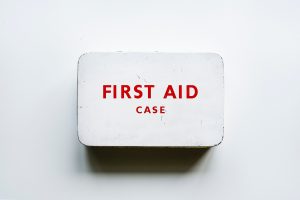
At the end of your career, your legacy will have little to do with how you acted when things were going just fine. You’ll be remembered for how you showed up in those moments when things were going haywire. When something goes wrong, where do people look? They look around for someone to help. You are the first person they will look to. A leader’s role is never more crucial than when people need them.
I spend a lot of time talking about crisis leadership. A crisis is “a time of intense difficulty, trouble, or danger; a time when a difficult or important decision must be made.” This is a pretty broad definition, and it means a crisis can be a lot of different things. Most crises we think of tend to be sudden and have a wide-ranging impact – like a natural disasters, incidents of workplace violence, technology or equipment failures that impact safety, or events that have the potential to cause severe reputational harm to the organization. But sometimes it’s relative. Your personal crisis isn’t my personal crisis – your child gets into a car accident on the way to school, your aging parent suffers a health event, your dog dies, or you get a terrifying diagnosis.
In any of these situations, though, we need the same thing: We need someone to steady us, to right the ship, and plot a course through the storm. This is the essence of crisis leadership. This is another example where it sounds simple, but is anything but easy.
The demands on a leader in a crisis situation are significant, and they come precisely when it’s most difficult to meet them. Most of us hope and expect that when challenging times come to call, we will rise to the occasion. But the truth is that difficulty more often than not brings out the worst in us, not the best in us. Stressful situations elicit an array of negative emotions, and this emotional hijacking negatively impacts our ability to think effectively – we become less strategic, less optimistic, less creative, and less effective problem solvers.
This is why emotional intelligence is a foundational leadership competency. The ability to self-regulate emotion is what allows leaders to stay in an effective zone even when situations prod us to abandon our best selves. And when we can do this, we can do it for others: emotional contagion is very real, and the emotions of a leader are even more powerful. Demonstrating composure and emotional fortitude allows you to shape your team’s response to adversity, as well as signals that you can be trusted to follow.
But that just helps you clear the first hurdle. Crises push us off script, which means we need to ever-more responsive to the present moment to navigate them. This requires situational awareness and organizational agility. Strong leaders overcome the cognitive bias toward seeing what we hope, expect, or desire and take a clear-eyed view of the situation. This assessment is underpinned by a deep understanding of the complexities of the context, which allows them to quickly connect resources, anticipate down-stream impacts, and influence the perspectives of constituents across and outside of the organization.
Most people just hope to get through a crisis relatively unscathed, to take the hit and rebound quickly. The crisis leader possesses an innovative, flexible mindset that allows them to take calculated risks that turn adversity into opportunity – so that we actually come out the other side with more than we did going in. This also requires strong influence and communication skills, because people under duress tend to fall back on what is known and need to be convinced.
We’ve all heard the phrase “putting out fires.” It’s easy for leaders who are overwhelmed to want to resolve the crisis and move on to the next challenge. A crisis is a difficult situation that is associated with negative emotions – it’s human nature to not want to revisit it. But failing to do so loses an enormous learning opportunity for individuals, teams, and organizations. What happened and why? How could we have prepared better? What did we do well? What would we do differently? Giving people time and space to reflect and recover from a crisis builds resilience.
Organizations in this day in age need leaders who can help them get through what feels like continual disruption. Are you ready for the challenge?
